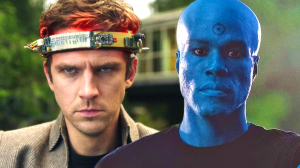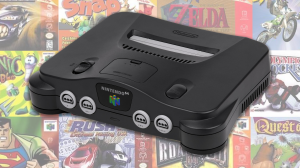As the first title from V1 Interactive, Disintegration has some pretty high expectations from video game fans. After all, studio head Marcus Lehto is the co-creator of Halo. Most fans would expect Lehto’s latest to be another first-person shooter, and while Disintegration does include FPS elements, it owes quite a bit to the real-time strategy genre as well. It’s a rather unique blend, but one that gives the game an interesting hook. While Disintegration doesn’t quite reach the heights of Halo, it does deliver an experience that can be a lot of fun, when everything is working the way that it’s supposed to.
Videos by ComicBook.com
In Disintegration, players take on the role of former Gravcycle pilot Romer Shoal. Shoal and his group of outlaws have been “integrated,” meaning that they have human brains that have been placed inside robot bodies. The majority of humanity has undergone the process following a number of cataclysmic events. For many, integration is meant to be temporary; Shoal and his fellow outlaws want to go back to being human, someday. However, the militant Rayonne group plans to stay in their current form, and want to destroy what’s left of humanity.
Disintegration‘s gameplay is quite compelling. As Romer, players ride on a Gravcycle, giving out orders to the other outlaws while simultaneously engaging in combat with Rayonne forces. For players that haven’t spent a lot of time with the RTS genre, Disintegration feels like a good starting point, as it offers an experience that’s a bit more action-packed. Balancing out your own combat decisions while giving out orders to your teammates can be a bit tricky, particularly when the game throws swarms of enemies at you. However, the mash-up works well, and it can be really exhilarating. Players looking for something a little more intense should definitely enjoy the game’s combat.
From the start, players can decide how much or how little guidance their teammates might need. I elected the default option, and found that my fellow outlaws were mostly competent. They felt capable, but I still felt like I was in charge. That competence is very much a good thing, because if a teammate dies, players only have 30 seconds to resurrect them; otherwise, it’s back to the last checkpoint. Resurrecting a fellow team member only necessitates flying over them, but levels can be pretty big, and reaching a downed teammate in time can be easier said than done.
Different teammates offer different abilities, and players can combine those for different effects. For example, Seguin’s Slow Field creates a field in which Rayonne enemies move at a snail’s pace. Players can then use Doyle’s Mortar Strike to rain down on those slow-moving opponents. Sometimes the game will task players with completing these combos to gain extra EXP after each mission, and it’s fun to see how these abilities can work in conjunction.
While the gameplay in Disintegration is really interesting, the game’s plot never felt like it lived up to its promise. The idea of a world where the majority of mankind exists in robotic forms seems really intriguing, but it just didn’t feel like V1 Interactive expanded on it well enough. I found myself wanting to know a lot more about the game’s world and how it all worked, but the story just felt like window dressing. Shoal’s Gravcycle allows players to scan items in the world, and this would have been the perfect opportunity to provide players with deep lore to learn about the world, but instead players are just given some basic information. I would have loved to see something along the lines of what Metroid Prime offered.
It wasn’t just the lack of background information, as it felt hard to care about Shoal and his fellow outlaws. This is compounded by the fact that the characters just don’t have a whole lot of personality. While Romer and the other outlaws are still human, their robot faces lack emotion, and their designs are just a bit generic. The game’s voice work is mostly strong, and it helped to sell the emotions of each character, but it couldn’t make up for the game’s weak writing.
Making matters worse, the pre-release build had a bug that blacked out the screen for the majority of the game’s cutscenes. V1 Interactive and publisher Private Division are aware of the issue, so it’s possible that this will be ironed out by launch. That said, I was already struggling to feel invested in the game’s world and characters, and not being able to see the cutscenes made it all the more difficult. Some other issues cropped up during my time with the game, including crashes and moments where sound would drop out.
Unfortunately, Private Division did not have times available for console reviewers to participate in the game’s online segments. It’s easy to see how the gameplay would lend itself to a strong online component, but it’s impossible to say for certain without getting a chance to participate. Due to this, we have decided not to give the game a final review score right now. Disintegration’s gameplay is enjoyable, but it’s difficult to accurately judge what might actually release next week. Between the game’s pre-release bugs and the inability to partake in multiplayer, our review remains incomplete. This review will be updated, however, once the game has launched.
Disintegration will release on PlayStation 4, Xbox One, and PC on June 16th. A retail code was provided by the publisher for the purpose of this review, and it was reviewed on a base model PlayStation 4.








